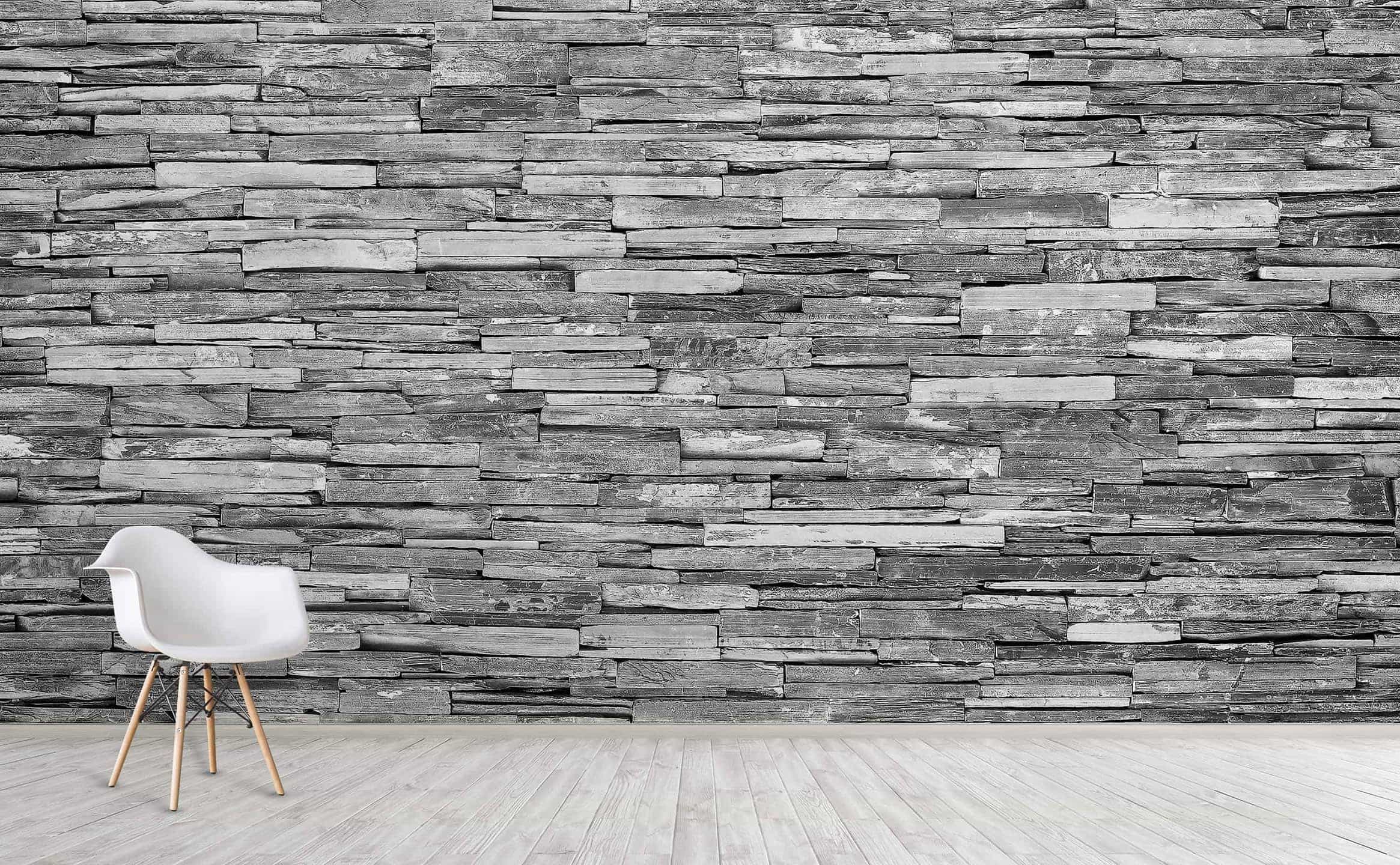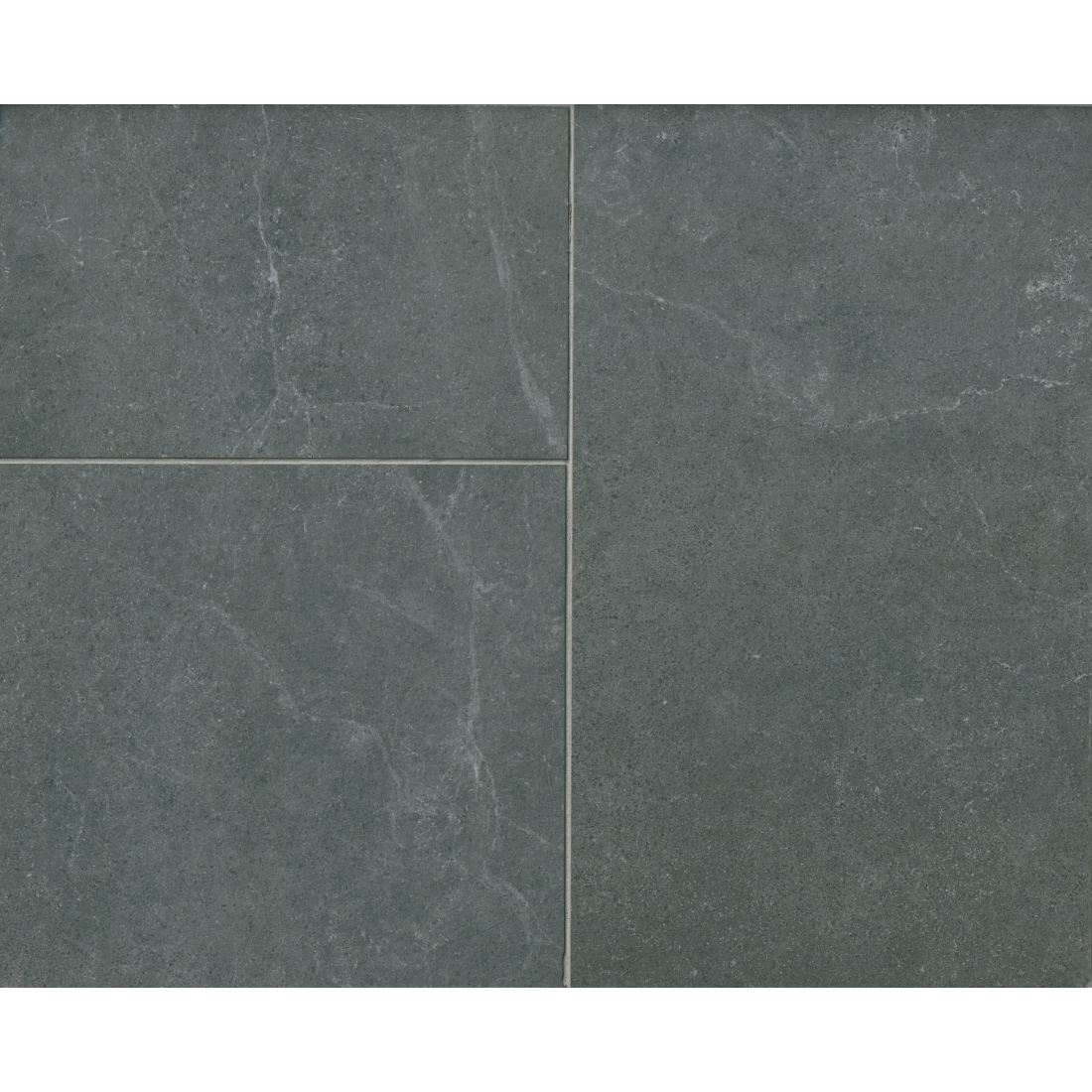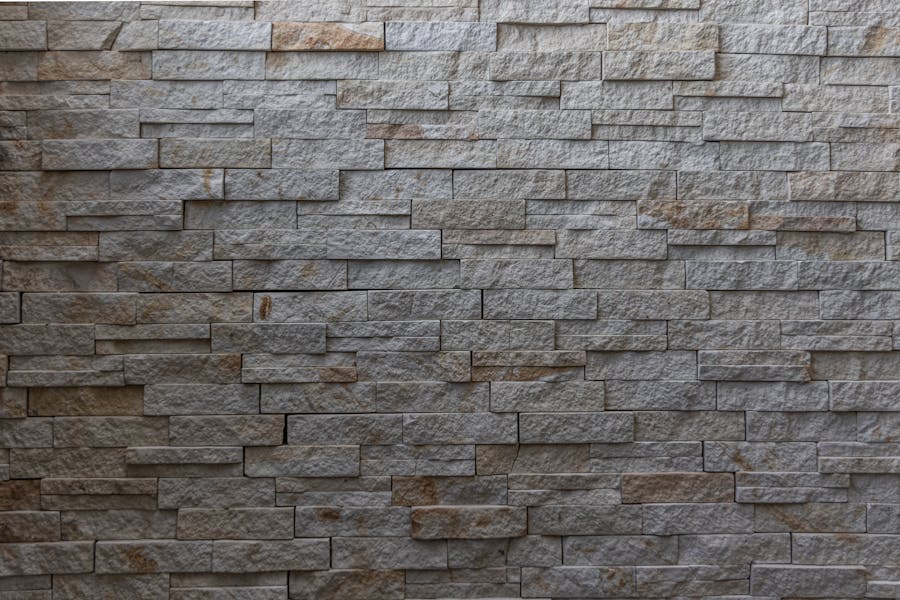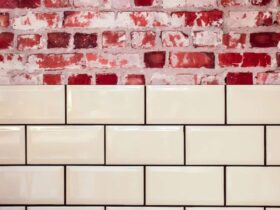The texture of slate is fine-grained and smooth, exhibiting a flat and layered appearance due to the alignment of its mineral grains. Slate is a type of metamorphic rock that forms from the alteration of shale or mudstone.
It is known for its fine-grained texture and smooth, flat appearance. The mineral grains in slate are aligned in parallel, giving it a distinctive foliation. Slate is a popular material for roofing tiles and as a material for writing tablets because of its ability to split into thin sheets.
It comes in a range of colors, from light to dark grey, as well as black, green, red, purple, and brown. In comparison to other metamorphic rocks, such as schist and gneiss, slate has a very fine-grained texture and a distinctly layered appearance.
What Is Slate?
Slate is a type of metamorphic rock with a very fine-grained texture that often exhibits a smooth, flat, and layered appearance due to its alignment of mineral grains. It typically splits into thin sheets and is popularly used for roofing tiles and as a material for writing tablets.
Compared to schist, another type of metamorphic rock, slate has a finer texture with smaller mineral grains.
What is Slate?
Slate is a metamorphic rock that is commonly used in roofing, flooring, and as a material for writing tablets due to its unique properties. Its texture is what makes slate a preferred choice for many applications, especially roofing, as it splits into thin sheets. In this article, we will focus on the texture of slate, its definition, and composition.
Definition
According to geological terms, slate is a fine-grained, foliated metamorphic rock that is derived from sedimentary rock shale, clay, or volcanic ash. Its foliated texture gives it a unique layered appearance that is different from other types of smooth rocks. The texture of slate is characterized by its ability to break along flat planes, making it ideal for roofing and flooring applications.
Composition
The primary components of slate are clay minerals, like mica and chlorite, and quartz. The texture of slate is predominantly sedimentary, which makes it distinct from other types of metamorphic rocks like schist. Schist has a coarser texture compared to slate, with larger mineral grains that are visible to the naked eye. It often has a foliated or layered appearance, with the minerals arranged into distinct bands or layers. This texture gives schist a more pronounced and textured appearance compared to slate.
In summary, the texture of slate is fine-grained and foliated, providing a smooth, flat, and layered appearance. The composition of slate primarily comprises clay minerals, mica, chlorite, and quartz. Unlike other metamorphic rocks like schist, its texture is softer, which allows it to split into thin sheets, making it an ideal choice for roofing and writing purposes.

Credit: wallsneedlove.com
Texture Of Slate
Slate has a distinct fine-grained texture and typically exhibits a smooth, flat, and layered appearance due to its alignment of mineral grains. It often splits into thin sheets, making it a popular choice for roofing tiles and as a material for writing tablets.
The size of mineral grains in slate is not visible to the naked eye but can be seen only through a microscope.
Texture of Slate
Slate is a fine-grained metamorphic rock that is popular for its smooth, flat, and layered appearance. The texture of slate, defined by its arrangement of mineral grains, makes it suitable for a wide range of applications, including roofing tiles and writing tablets. Here are some of the key factors that contribute to the texture of slate.
Fine-grained texture
Slate has a very fine-grained texture that is formed by the alignment of mineral grains during the process of metamorphism. This gives slate its smooth appearance and makes it easy to split into thin sheets. The fine-grained texture also contributes to the durability of slate, making it resistant to wear and tear.
Smooth and flat appearance
The smooth and flat appearance of slate is a result of the alignment of mineral grains and the formation of cleavage surfaces. The layers of slate can be easily separated along these cleavage surfaces, which makes it a popular choice for roofing tiles and other construction applications. The smooth and flat appearance also makes slate an ideal material for writing tablets.
Layered structure
Slate has a layered structure that is formed by the alignment of mineral grains during the process of metamorphism. This gives slate its distinctive appearance and makes it easy to split into thin sheets. The layers of slate can be easily separated along the cleavage surfaces, which makes it a popular choice for roofing tiles.
Cleavage surfaces
The cleavage surfaces of slate are formed during the process of metamorphism, as the mineral grains become aligned and compacted. These cleavage surfaces make it easy to split slate into thin sheets, which increases its versatility and makes it suitable for a wide range of applications.
In conclusion, the texture of slate is a result of its fine-grained structure, smooth and flat appearance, layered structure, and cleavage surfaces. These factors make slate a popular choice for roofing tiles, writing tablets, and other construction applications where durability and versatility are important.
Comparison With Other Rocks
Compared to other rocks, slate has a very fine-grained texture and typically exhibits a smooth, flat, and layered appearance due to its alignment of mineral grains. It often splits into thin sheets and is a popular choice for roofing tiles and writing tablets.
Its texture is different from schist, which has a coarser texture with larger mineral grains visible to the naked eye.
Comparison with other rocks
Slate is a metamorphic rock that is known for its unique texture. Its fine-grained texture makes it a popular choice for a variety of construction purposes. However, it is often confused with other metamorphic rocks such as schist, gneiss, and marble due to their similar appearance. In this section, we will discuss the differences between slate and these rocks.
Difference with schist
Schist and slate are both metamorphic rocks, but they differ in terms of texture. Schist has a coarser texture compared to slate due to the larger mineral grains that are visible to the naked eye. Schist often has a foliated or layered appearance, with minerals arranged into distinct bands or layers. On the other hand, slate has a smooth, flat, and layered appearance due to the alignment of mineral grains, which often splits into thin sheets.
Difference with gneiss
Gneiss is another type of metamorphic rock that has a similar appearance to slate. However, gneiss has a medium to coarse-grained texture, which makes it more grainy than slate. It is made up of various minerals, including quartz, feldspar, and mica, which are arranged into distinct bands or layers. In contrast, slate has a more homogenous texture due to the alignment of mineral grains.
Difference with marble
Marble is a metamorphic rock that is commonly used for construction purposes, just like slate. However, marble has a completely different texture compared to slate. Marble has a coarse-grained texture due to the presence of large mineral grains in it. It is formed from limestone or dolomite and has a crystalline texture that glistens when exposed to light. On the other hand, slate has a fine-grained texture and is usually smooth and flat.
In summary, slate has a unique texture due to its mineral composition and metamorphic process. It is often confused with other metamorphic rocks such as schist, gneiss, and marble, but they differ in texture and appearance. Understanding the differences between these rocks is essential in choosing the right construction material for specific applications.
Physical Characteristics Of Slate
Slate has a very fine-grained texture and typically exhibits a smooth, flat, and layered appearance due to its alignment of mineral grains. It often splits into thin sheets, making it a popular choice for roofing tiles and as a material for writing tablets.
The texture of slate is so fine that its mineral particles can only be seen through a microscope.
Slate is a fine-grained metamorphic rock that is formed from shale by low-grade regional metamorphism. It is a dense, fine-grained rock that is composed of clay minerals or mica. The texture of slate is unique and distinguishes it from other rocks. It has a characteristic smooth, flat, and layered appearance due to its alignment of mineral grains.
Color
The color of slate varies widely depending on its mineral content. Slate can be found in different shades of gray, black, green, purple, brown, and red. Apart from the color variations, you can find slate with different patterns and veins on its surface. The color and patterns of slate depend mainly on the location and the minerals present in the parent rock from which it was formed.
Smoothness To Touch
The texture of slate is fine-grained, and the rock is smooth to touch. Its flat surface makes it an ideal choice for roofing tiles and paving stones. Due to its smoothness, slate is also a popular choice as a material for writing tablets historically.
Hardness
Slate is a relatively hard rock with a hardness rating of 3 to 4 on the Mohs scale. This makes it durable and long-lasting, and suitable as a material for roofing, flooring, and cladding. It is resistant to acid and thermal changes, and can withstand a wide range of temperatures and weather conditions.
In conclusion, the texture of slate is one of its signature features. Its smooth, fine-grained texture, combined with its colors and patterns, make it a popular choice for roofing, flooring, and cladding. It is an attractive and durable rock that can add beauty and elegance to any construction project.

Credit: www.tileshop.com
Frequently Asked Questions On What Is The Texture Of Slate
What Is The Texture Of Slate Said To Be?
Slate is a fine-grained metamorphic rock that has a smooth and flat layered appearance due to the alignment of its mineral grains. Its texture is said to be fine-grained because the mineral particles can be seen only with a microscope.
It often splits into thin sheets, making it popular for roofing tiles and as a material for writing tablets.
Is Slate Hard Or Soft?
A hard, fine-grained metamorphic rock with a very fine-grained texture. It often exhibits a smooth, flat, and layered appearance because of its alignment of mineral grains. Slate has a slaty cleavage, which allows it to split into thin sheets, making it a preferred choice for roofing tiles and as material for writing tablets.
What Is The Physical Appearance Of Slate?
Slate has a fine-grained texture with a smooth, flat, and layered appearance due to mineral grains alignment. It mainly splits into thin sheets and is a popular choice for roofing tiles and writing tablets. Its color varies from light to dark grey, and it can also be found in black, green, red, purple, and brown colors.
Its texture is fine-grained and can only be seen through a microscope.
What Does Slate Look And Feel Like?
Slate has a fine-grained texture and appears smooth, flat, and layered due to its aligned mineral grains. It also splits into thin sheets and feels smooth. Its color varies from light to dark gray, and it can also be found in black, green, red, purple, and brown colors.
This fine-grained texture makes it a low-grade metamorphic rock.
What Is The Texture Of Slate?
Slate has a very fine-grained texture and typically exhibits a smooth, flat, and layered appearance due to its alignment of mineral grains. It often splits into thin sheets, making it a popular choice for roofing tiles and as a material for writing tablets.
Conclusion
Slate is a fine-grained metamorphic rock with a smooth, flat, and layered appearance due to its alignment of mineral grains. Its texture is characterized by the small size of its mineral particles which are visible only under a microscope. Slate is commonly used for roofing tiles and writing tablets due to its ability to easily split into thin sheets.
Understanding the texture of slate is important for its various applications and further exploration of metamorphic rocks.









Leave a Reply